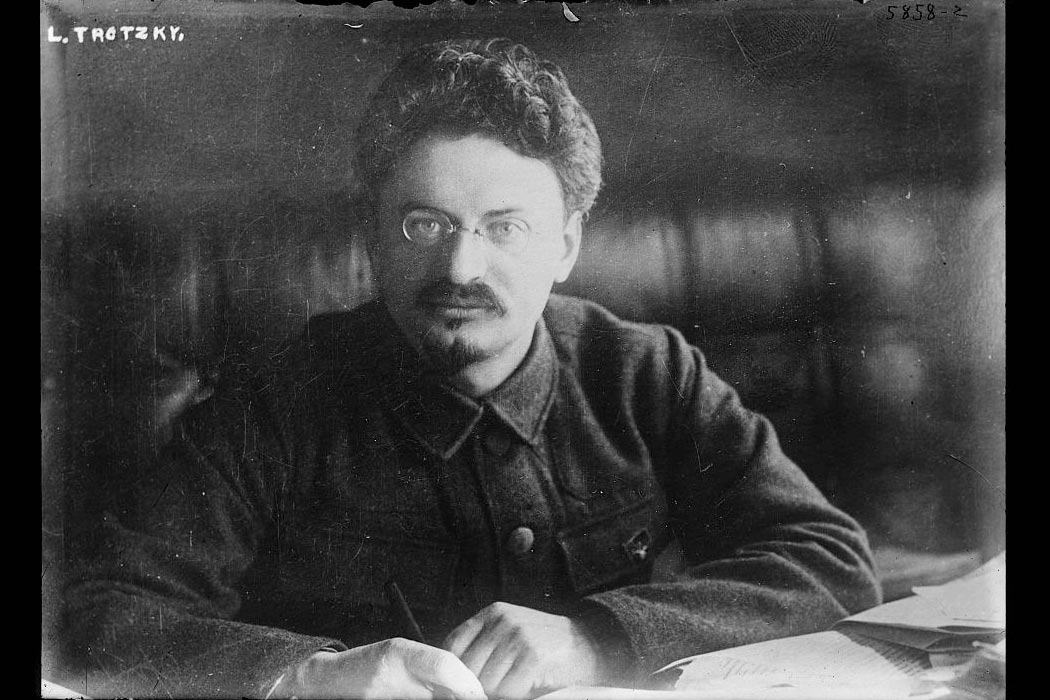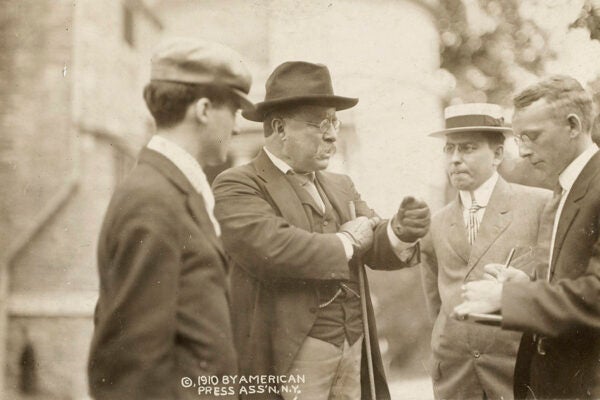Perhaps the most far-reaching effect of the First World War was the destruction of three empires—Russia, Austria-Hungary, and Ottoman—and the utter transformation of the map of Europe and the Middle East as a result.
The first of these to fall was that of Tsarist Russia, which began to topple in the Revolution of February, 1917. However, the Bolsheviks did not seize power until later that year, during the Revolution of October, 1917. (see note below about dates). The Bolshevik leadership was mostly exiled abroad or in Siberia when the first revolution occurred. V. I. Lenin was in Switzerland, and Leon Trotsky, who would rise to fame as head of the Red Army and then lose a power struggle with Joseph Stalin, was in New York City.
Trotsky had arrived in New York with his wife and two children in January, 1917 after Spain had kicked him for being a revolutionary socialist troublemaker. He would only stay in New York two and a half months, but they were apparently memorable ones for him. He later wrote in his autobiography: “Here I was in New York, city of prose and fantasy, of capitalist automatism, its streets a triumph of cubism, its moral philosophy that of the dollar. New York impressed me tremendously because, more than any other city in the world, it is the fullest expression of our modern age.”
Frederick C. Giffin details Trotsky’s New York minute. There’s some question about where exactly the Trotskys lived. In My Life, Trotsky gives 164th Street in the Bronx as the location, “if I am not mistaken.” But other historians think Trotsky misremembered, and point to 1522 Vyse Avenue as the more likely address. Wherever it was, the apartment had some amenities that, according to Giffin, the Trotskys weren’t used to: “electric lights, a gas cooking range, a bathtub, an automatic service elevator.”
Trotsky plunged into the fractious, polyglot radicalism in the city, especially on the Lower East Side, where anarchists, socialists, communists, and others waged mostly a paper war against each other in the pages of The Call, Novy Mir, the Forward, and the Volkszeitung. He wrote and lectured, met Socialist Party leaders and had contempt for them, read voraciously in the New York Public Library’s Slavic collection, and tried to keep abreast of news from Russia.
As soon as he heard about the events in Petrograd, he attempted to get back. The family left on March 27, 1917, but Trotsky was pulled off the boat in Nova Scotia and detained by the British for a month. His already tumultuous life got a lot more frenzied before ending in Mexico in 1940 at the hands of one of Stalin’s killers.
(NOTE: Note that the Russians were then still using the Julian calendar; in the West, using the more accurate Gregorian calendar, these revolutions occurred in March and November, 1917.)







